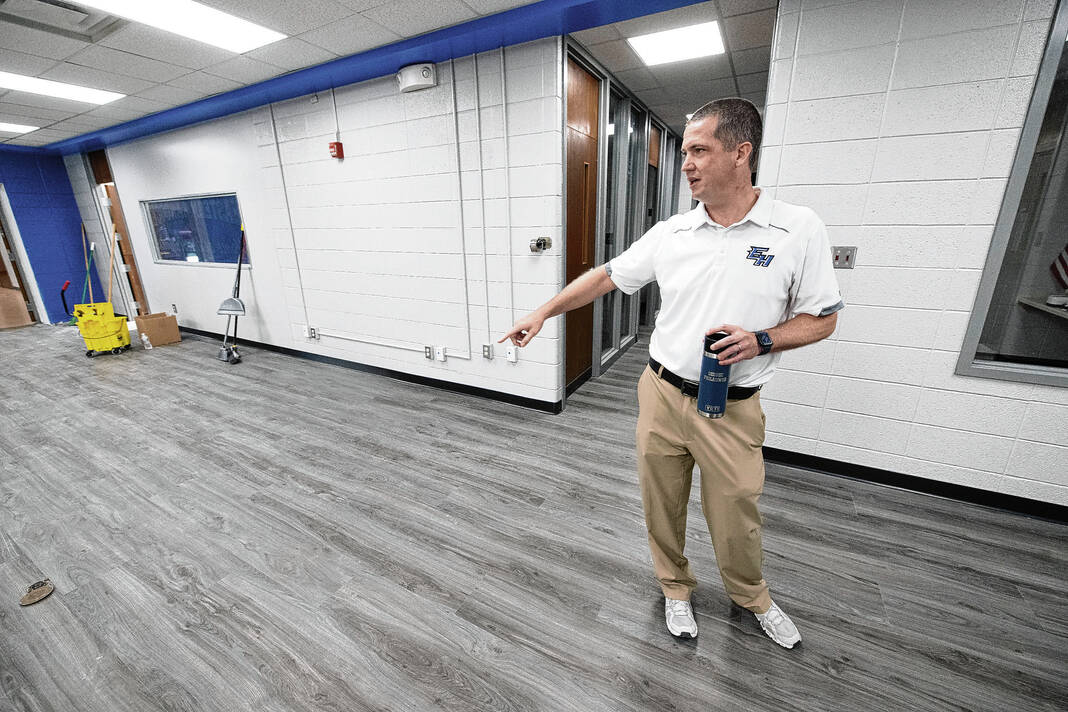CHARLOTTESVILLE — Officials with the Community School Corporation of Eastern Hancock County are pushing back some on a recent statewide study indicating students who attend smaller school districts don’t have the same educational opportunities as those who attend larger districts.
A recently released Ball State University study shows substantial differences in academic performance and opportunity for students enrolled in the state’s very smallest school districts versus districts with even modestly higher enrollment.
The study indicates small school districts – those with under 2,000 total students – also are getting smaller, exacerbating the challenges facing their students.

“When an entire K-12 school district is very small, the research clearly shows a significant negative difference in student learning, course offerings and post-graduation educational opportunities,” Kevin Brinegar, the president and CEO of the Indiana Chamber said in a release about the study.
The research is tied to the Indiana Chamber’s new Indiana Prosperity 2035 economic vision plan, which includes goals to improve student performance and course offerings through proposals such as combining very small school districts (not necessarily individual schools), shared services between districts, as well as increased remote and online access to higher level STEM courses.
Eastern Hancock superintendent George Philhower said why he appreciates these types of educational studies, they often don’t tell the full picture. Philhower noted in a smaller school district such as Eastern Hancock, the district has enough teachers and staff where they can get to know a student and customize a plan for each and every student.
“I would argue that a smaller school is more equipped to do that because we’re small enough where we can meet with every single junior and senior one-on-one along with our principal to help students customize their path towards graduation,” Philhower said.
Couple that with the community partnerships the district has development for hands on learning and Philhower noted, a smaller school district can offer just as much as a larger one.
Notable research findings in the study show in school districts with enrollment levels below 2,000 students, there exists substantial, negative differences in student performance, access to important higher-level courses, college preparation and college enrollment rates.
However, Philhower notes those types of statements and studies don’t incorporate all the minor details when it comes to education as a whole.
“If you look at national statistics on college completion, it’s below 30% for kids to complete a four-year degree in five years,” Philhower said. “We really should not look at data that is really not very good in the first place as a way to sort and rank schools.”
Philhower also noted the Eastern Hancock campus offers an abundance of college-level classes through their partnership with I.U. East and said that many Eastern Hancock students graduate with multiple college class credits.
“Technology is making that so much easier to do even more than we could just a few years ago,” Philhower said.
The study showed a majority, 56% of the state’s 290 school districts have less than 2,000 students enrolled in the entire K-12 school district. These districts are concentrated in small communities and rural areas of the state.
The study points out average ILEARN and IREAD exam passage rates are significantly lower for the state’s smallest school districts. For instance, average ILEARN scores are more than eight percentage points lower (20% lower) than in schools with enrollments of 2,000 to 2,999 students.
“I would like to see the socioeconomic status and how it relates to this study,” Philhower said. “I feel there will be a stronger correlation to success surrounding that than the size of school throughout the state.”
Brinegar said that Indiana is operating a two-tiered public education system where students in very small school corporations are being held back without access to vital educational opportunities because the economics of providing for a quality education simply don’t work.
“Indiana must get serious about increasing the size and course offerings available to Hoosier students in the very smallest school districts,” he said. “All children, regardless of their ZIP code, have a right to an education to help them succeed.”
Philhower noted parents already have a right to choose what school district they want their child to attend. Some 35% of Eastern Hancock students are transfer students, increasing their enrollment this year from previous attendance numbers.
“I feel like our community is interested in the individual attention each kid can get in a small school,” Philhower said. “Indiana already has a system to allow families to choose a school or district that meets their family’s needs and this choice system allows families who do not have a positive small school experience to make a different choice.”
Philhower said he feels so strongly about the positive educational opportunities being presented for students that his children attend the district. He also noted the joint educational opportunities that are now offered across the board provide great opportunities for county families.





